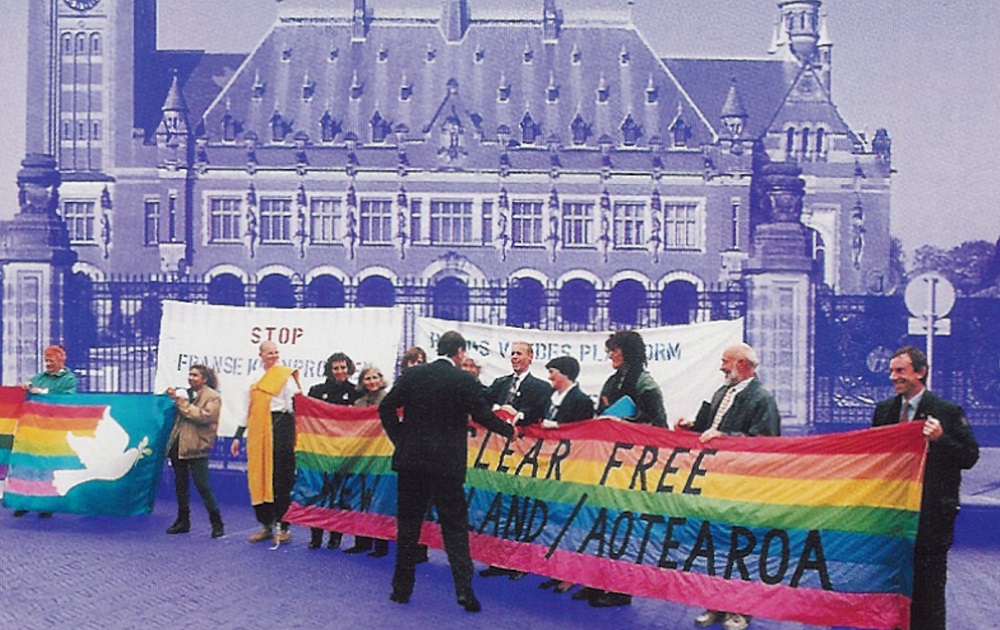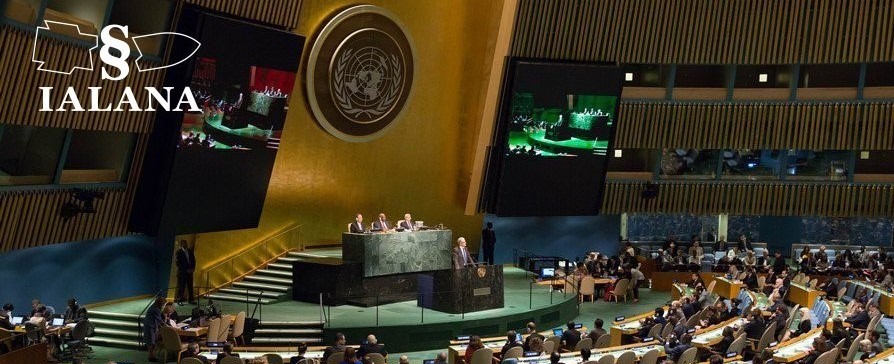On Monday (March 27, 2017), the United Nations commences negotiations on a nuclear weapons prohibition treaty.
According to the International Association of Lawyers Against Nuclear Arms (IALANA), a group of experts in international law and nuclear weapons, the treaty should affirm the illegality of the threat and use of nuclear weapons under existing international law, and the universal obligation to negotiate for complete nuclear disarmament.
In a Discussion Paper submitted to the UN Conference to Negotiate a Legally Binding Agreement to Prohibit Nuclear Weapons, IALANA discusses the importance of including such affirmations in the pre-ambular section of the treaty, and then outlines additional prohibitions to include for States Parties to the treaty. These include obligations not to undertake any activities that give support to nuclear weapons – including to design, develop, test, produce, acquire, possess, deploy, maintain, finance, or allow transit or transfer of nuclear weapons.
The treaty should also prohibit the production of nuclear weapons delivery vehicles and nuclear-weapons grade fissile materials. And the treaty should include prohibitions on individuals undertaking such activities, as well as a recognition of the rights of victims of the nuclear arms race, and the importance of a subsequent agreement or agreements to eliminate nuclear weapons.
Threat and use currently prohibited – universal nuclear disarmament obligation
IALANA outlines current international law prohibiting the use of nuclear weapons, in particular international humanitarian law; international human rights law; and international environmental law.
‘Because of their very nature, the use of nuclear weapons is illegal under customary international law. They cannot be used in compliance with fundamental principles protecting civilians and neutral states from the effects of warfare, protecting combatants from unnecessary suffering, protecting the environment from severe and irreversible damage, and safeguarding the interests of future generations. Use of nuclear weapons would constitute war crimes under the Rome Statute of the International Criminal Court, and, in many circumstances, crimes against humanity as well.’
The paper also outlines current international law prohibiting the threat to use nuclear weapons, including the United Nations Charter and international humanitarian law.
‘Any threatened use of nuclear weapons would be a threat of force contrary to the UN Charter prohibition of threat of force inconsistent with the purposes of the United Nations; it also likely would be either an aggressive or disproportionate threat in violation of Article 2(4) or the conditions, necessity and proportionality, for the lawful exercise of self-defense pursuant to Article 51. Such a threat would also violate international humanitarian law in light of the ICJ’s statement that, “If an envisaged use of weapons would not meet the requirements of humanitarian law, a threat to engage in such use would also be contrary to that law.”
It additionally could violate specific provisions of international humanitarian law, namely the prohibition of threatening that there shall be no survivors and the prohibition of “acts or threats of violence the primary purpose of which is to spread terror among the civilian population”.’

IALANA also highlights the universal obligation to achieve nuclear disarmament, affirmed by the International Court of Justice in its 1996 Advisory Opinion on the Legality of the Threat or Use of Nuclear Weapons. This obligation is derived partially from Article VI of the NPT, but also from UN resolutions (including a number of resolutions supported by States non-party to the NPT) and other expressions of the customary norm.
IALANA argues that it is vital for the nuclear prohibition treaty, in its preamble, to affirm the above international law in order to:
a) avoid any implication that prohibitions of threat and use would apply only to states parties to the treaty, but that these customary rules of international law would continue to apply also to non-states parties;
b) reinforce that the ban treaty will need to be followed by an agreement or agreements on the complete elimination of nuclear weapons.
Elements for the operative section of the treaty
In outlining key elements for the operative part of the treaty, IALANA refers to the Model Nuclear Weapons Convention (Model NWC) which was developed by IALANA and other disarmament experts, submitted to the UN by Costa Rica and Malaysia, and then circulated by the UN Secretary-General as a guide to multilateral nuclear disarmament negotiations.
In general, the prohibitions proposed on nuclear weapons are similar to the prohibitions on chemical weapons found in the Chemical Weapons Convention. However, IALANA calls for some additional prohibitions, drawing from the Model NWC. These include prohibitions on threat of use, nuclear weapons delivery vehicles, financing of nuclear weapons production, and research directly related to nuclear weapons development.
IALANA also highlights the importance of including prohibitions on ‘persons’, as well as prohibitions on States Parties. This fundamental obligation includes the requirement that parties penalize prohibited actions undertaken on their territories by anyone, or undertaken anywhere in the world by their nationals and permanent residents.
The working paper also discusses cooperation of States parties with non-parties, and notes that the treaty should rule out the acceptance of extended nuclear deterrence, or any other cooperation by States Parties relating to the use of nuclear weapons, or the planning and preparation for such use.Nike KD 11

